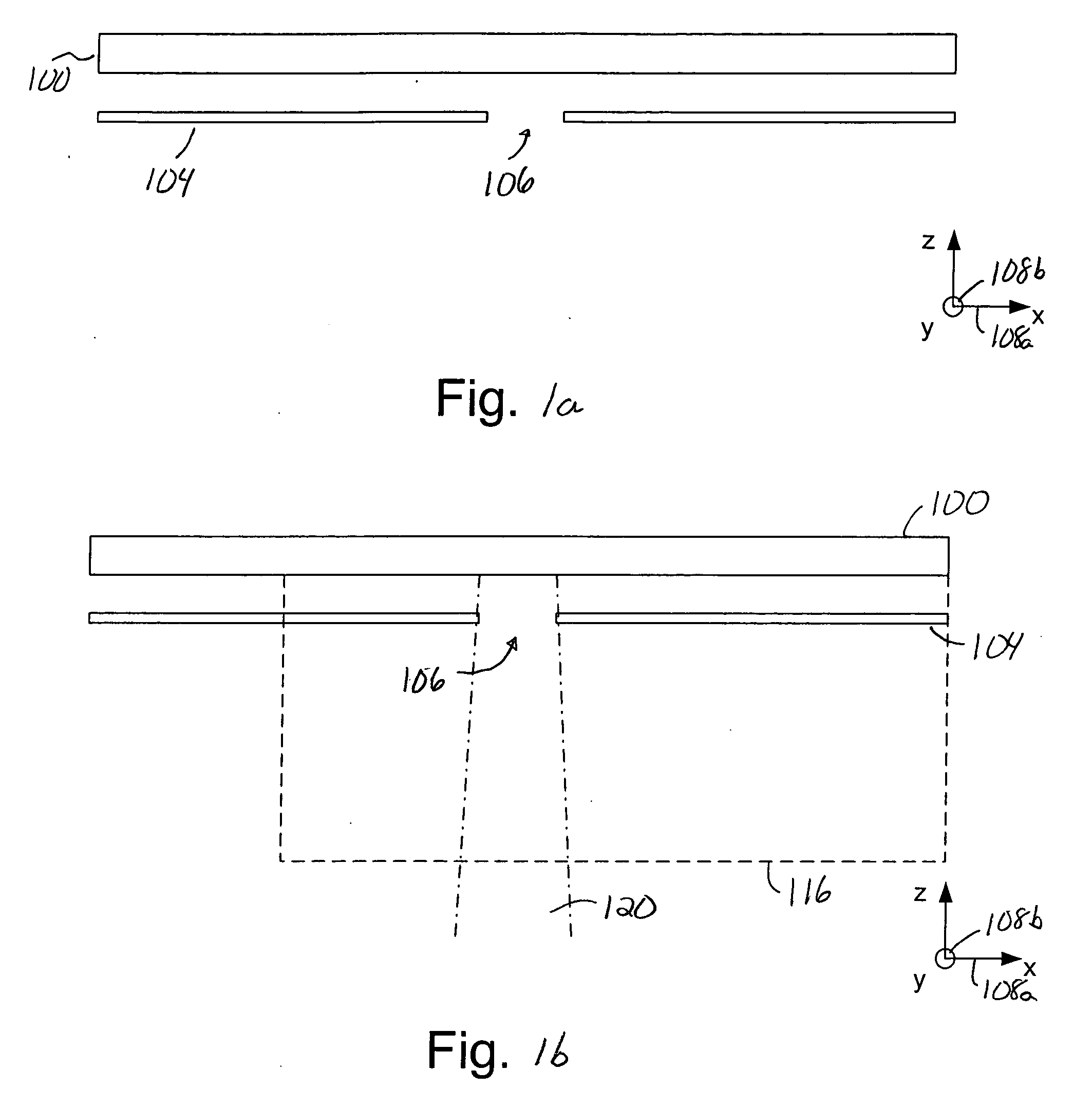Method and apparatus for protecting an EUV reticle from particles
a technology of reticle and euv, which is applied in the direction of photomechanical equipment, instruments, printing, etc., can solve the problems of euv lithography that does not use pellicles to protect euv reticles from particle contamination, pellicles are not used to protect euv reticles, and the lithography process which utilizes reticles may be compromised, so as to reduce particle contamination
- Summary
- Abstract
- Description
- Claims
- Application Information
AI Technical Summary
Benefits of technology
Problems solved by technology
Method used
Image
Examples
Embodiment Construction
[0041] Particle contamination on critical surfaces of reticles such as reticles used in extreme ultraviolet (EUV) lithography systems may compromise the integrity of semiconductors created using the reticles. Hence, protecting critical surfaces of reticles from contaminants is important to ensure the integrity of lithography processes. Some reticles are protected from particles through the use of pellicles. However, pellicles are not suitable for use in protecting surfaces of EUV reticles. While thermophoresis is also often effective in protecting reticle surfaces from particle contamination, since the use of thermophoresis as a method of protection from particle contamination is not suitable in a relatively high vacuum, EUV reticles may not be protected from particle contamination through the use of thermophoresis.
[0042] By protecting substantially all of a front surface of a reticle, with the exception of the area of the reticle that is to be illuminated using EUV beams, using a ...
PUM
 Login to View More
Login to View More Abstract
Description
Claims
Application Information
 Login to View More
Login to View More - R&D
- Intellectual Property
- Life Sciences
- Materials
- Tech Scout
- Unparalleled Data Quality
- Higher Quality Content
- 60% Fewer Hallucinations
Browse by: Latest US Patents, China's latest patents, Technical Efficacy Thesaurus, Application Domain, Technology Topic, Popular Technical Reports.
© 2025 PatSnap. All rights reserved.Legal|Privacy policy|Modern Slavery Act Transparency Statement|Sitemap|About US| Contact US: help@patsnap.com



